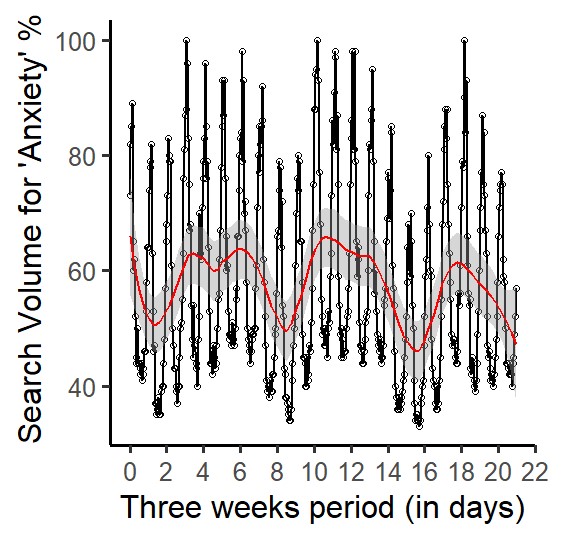By Frederic Boy, PhD, Assoc. Professor in Management and Psychology
The unfolding lockdown is a constraining situation, but also rare opportunity to gather data on how communities react to strict, sudden restrictions of movement and social contact. For the first time in post-war Europe, most individuals, whether they are remotely working, furloughed, not active or recently made redundant, have a few things in common:
- They are more socially isolated than before
- They are living with connected technology with which they can easily express their psychological unease or seek help, anonymously
In a matter of weeks, the future we are all facing has suddenly become more uncertain, and global societal change may be soon coming. Our relationship to travel, to work, to enact social interactions, or to study will be transformed for an unpredictable duration of time. The impact of those changes on physical and mental health is inescapable and will need to be integrated into future post-crisis/recovery policymaking. We believe that rapid implementation and communication of the present results could directly provide law- and policy-makers with wellbeing metrics that help tailor relevant responses and improve civic engagement.

In the months preceding the current pandemic in Western Europe, our team at the School of Management (along with Dr Annie Tubadji, Dr Wayne Thomas, Prof Don Webber, Dr Daniele Doneddu and Khalda Alkenane, PhD student) initiated a research programme that explores how people carry out online searches related to their wellbeing and how they express their psychological distress.
We had designed a suite of novel Artificial Intelligence software and methods to data-mine the web. Data mining is the process of discovering meaningful patterns in large data sets involving methods at the intersection of machine learning, statistics, linguistics. As the epidemic unfolded in Wuhan province, then spread to Europe and became a pandemic, we were ready to use our expertise to explore the online expression of psychological distress, internationally and in real-time.
Indeed, the unfolding pandemic and the ensuing lockdowns automatically became rare, unanticipated, and urgent opportunities to understand how sudden global shocks affect individuals. This research programme aimed to assist current efforts for informing future data-driven policies and ultimately for building more resilient communities.
We firstly examined tens of billions of Google searches on more than a thousand days (2017-2019). We were the first to establish that the search volume for psychological-distress keywords (such as “anxiety”, “stress”, suicide) possessed a very robust, rhythmic pattern during the day, and the vast majority of searches happened at night (peak at 02:00, see Figure). Similarly, we extracted weekly patterns (also called ‘seasonalities’) in those searches that clearly illustrate the impact of the working week on mental health-information seeking behaviour (see Figure). Far for being trivial, those very robust seasonalities are the hallmark of life in a connected society, members of which have found channels to express their psychological ailments, and potentially seek information and help.
What happens to such data? How can they be used in the current pandemic situation? Research, such as ours, first undergoes a process called ‘peer-review’: its process and results are evaluated by specialists in the field in terms of quality and trustworthiness. If they are deemed of quality, they are published. Once published, these results could be used to influence policy-making in the provision of emergency mental health services and crisis helplines. Knowing that individuals are more or less likely to seek information on precise mental-health keywords at precise (and vulnerable) times of the day might motivate a different response in mental-healthcare provision. However, we are not limiting our effort to the domain of mental health, and are also exploring other domains where our methodology and expert systems can be translated to assist the crafting of policies and laws, and rapidly evaluate.
At the heart of our approach is the combined use of Big data, Artificial Intelligence (Statistical Learning), Psychology, Cultural Economics, Narrative Economics and Linguistics to investigate how people understand complex situations happening against a dynamic informational background.
Blog written by: Frederic Boy, PhD, Assoc. Professor in Management and Psychology
Date published: 29/05/2020


